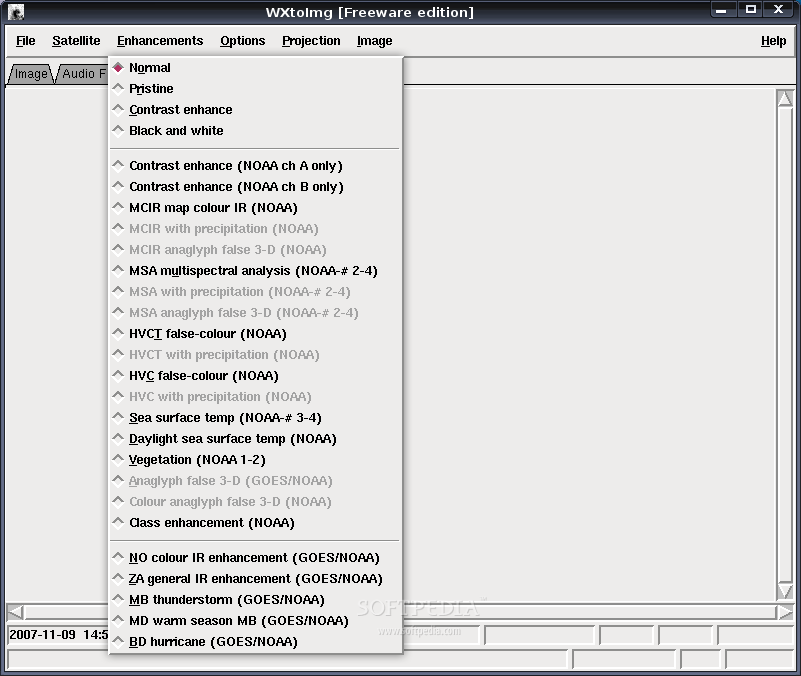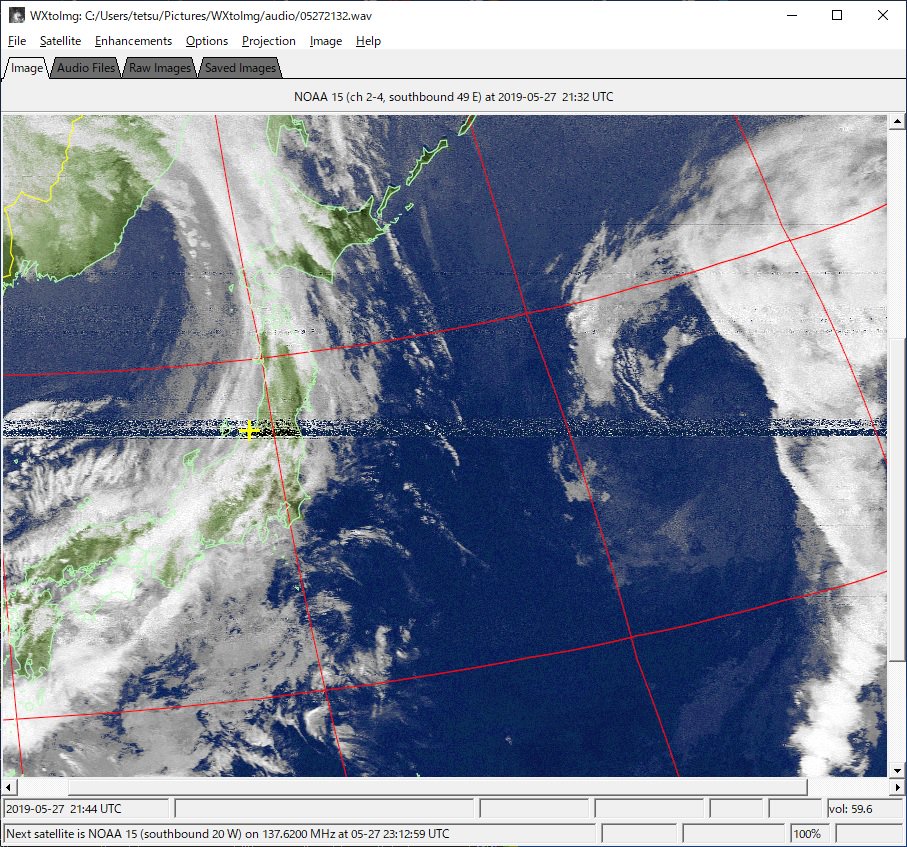

The sea surface temperature may be incorrect due to the presence of thin or small clouds in the pixel evaluated, or from noise in the signal. No attempt is made to distinguish cloud or land from sea. Uses the sea surface temperature derived from the sensor 3 and 4 images to colour the image.

Bright areas are completely unsaturated in this model.Ĭreates a false colour image from NOAA APT images based on sea surface temperature. The HVC colour model attempts to ensure that different colours at the same value will appear to the eye to be the same brightness and the spacing between colours representing each degree will appear to the eye to be similar. Uses the temperature derived from the sensor 4 image to select the hue and the brightness from the visible (sensor 2) image (or the sensor 4 image if the Use other sensor option is selected) to select the value and chroma. Same as HVCT false-colour, but high cold cloud tops are coloured the same as the NO enhancement to give an approximate indication of the probability and intensity of precipitation.Ĭreates a false colour image from NOAA APT images based on temperature using the HVC colour model. Similar to HVC (below), but with blue water and with colours more indicative of land temperatures. Same as MSA multispectral analysis, but creates a 3-D anaglyph image (must be viewed with red/blue glasses). Same as MSA multispectral analysis, but high cold cloud tops are coloured the same as the NO enhancement to give an approximate indication of the probability and intensity of precipitation. This enhancement does not use a palette nor is it temperature normalised. Produces a vivid false-coloured image as a result. Uses a NOAA channel 2-4 image and determines which regions are most likely to be cloud, land, or sea based on an analysis of the two images. High clouds appear white, lower clouds gray or land/sea coloured, clouds generally appear lighter, but distinguishing between land/sea and low cloud may be difficult. Disables gamma, sharpening, rotation, despeckling, and other enhancements.Ĭolours the NOAA sensor 4 IR image using a map to colour the sea blue and land green. No attempt is made to temperature normalise IR images. Typically used to output images for further processing by other software Pristine images are unenhanced, but unlike raw images have been normalised to produce images which represent, as best as the software is able to, the original digital data. Produce pristine output (best representation of original digital data). Produce a normal image, using Gamma, Sharpening, Despeckling, etc settings. WxtoImg, the program I mainly use for the polar satellites, knows a lot of enhancements.


 0 kommentar(er)
0 kommentar(er)
